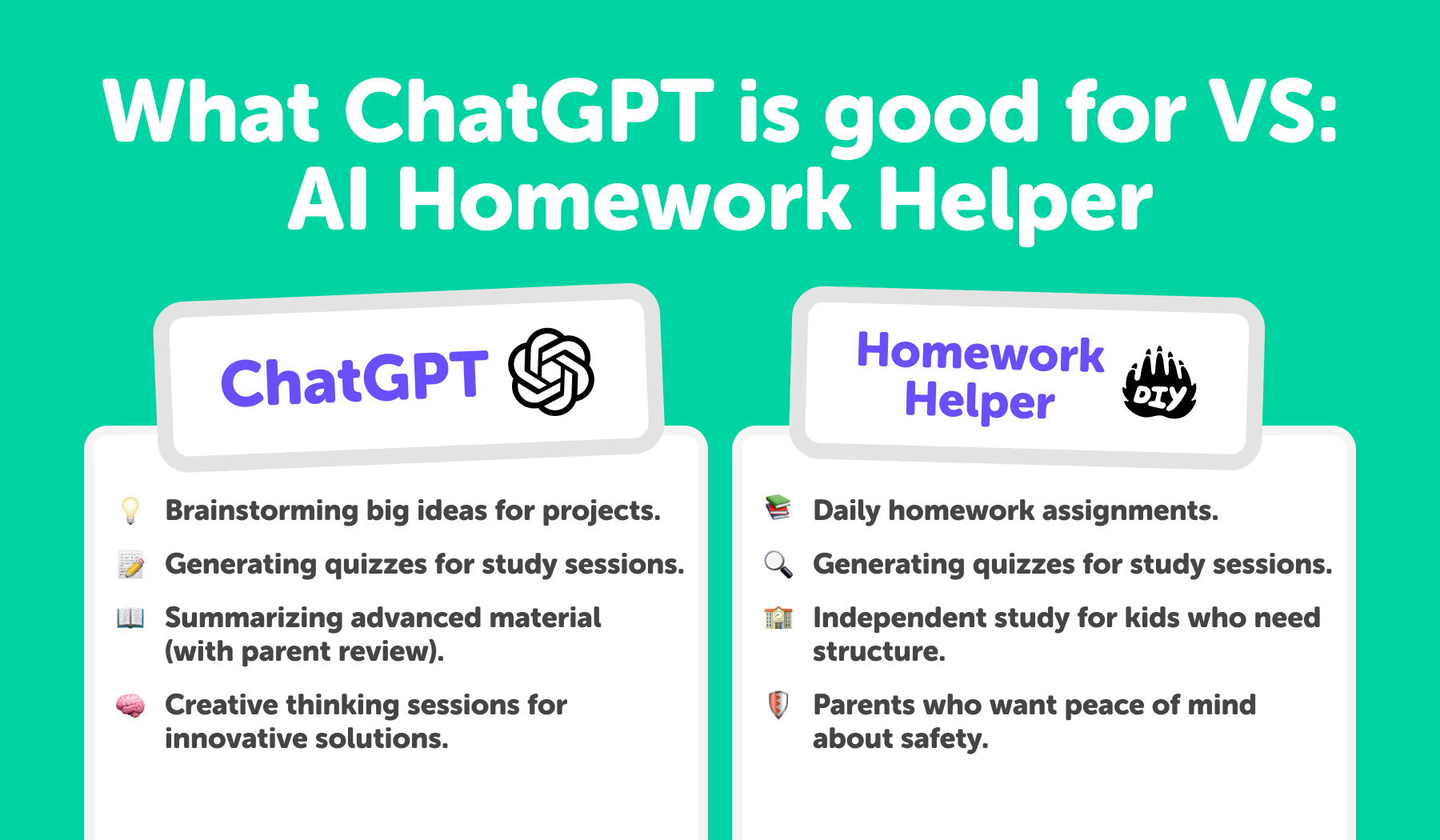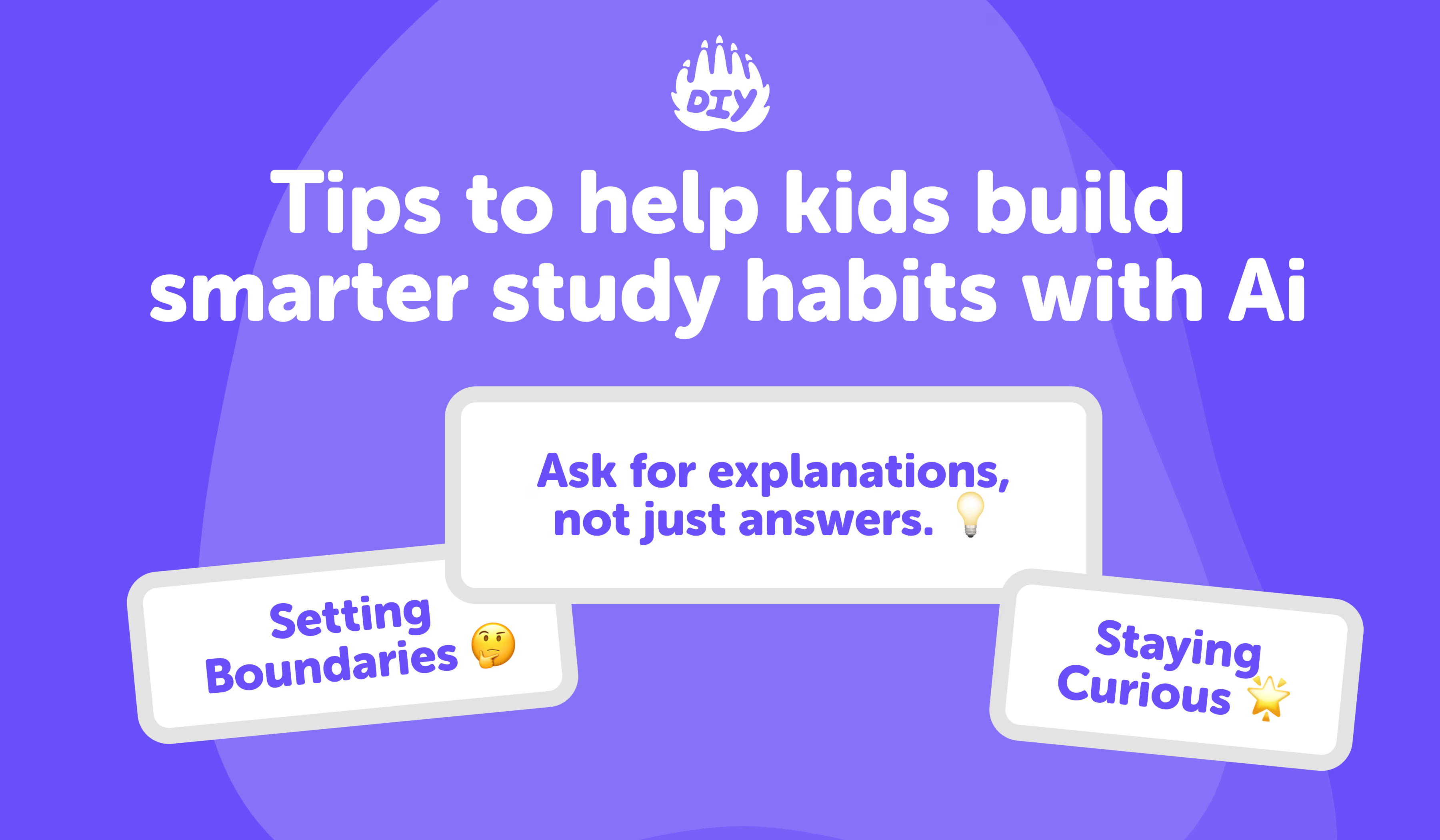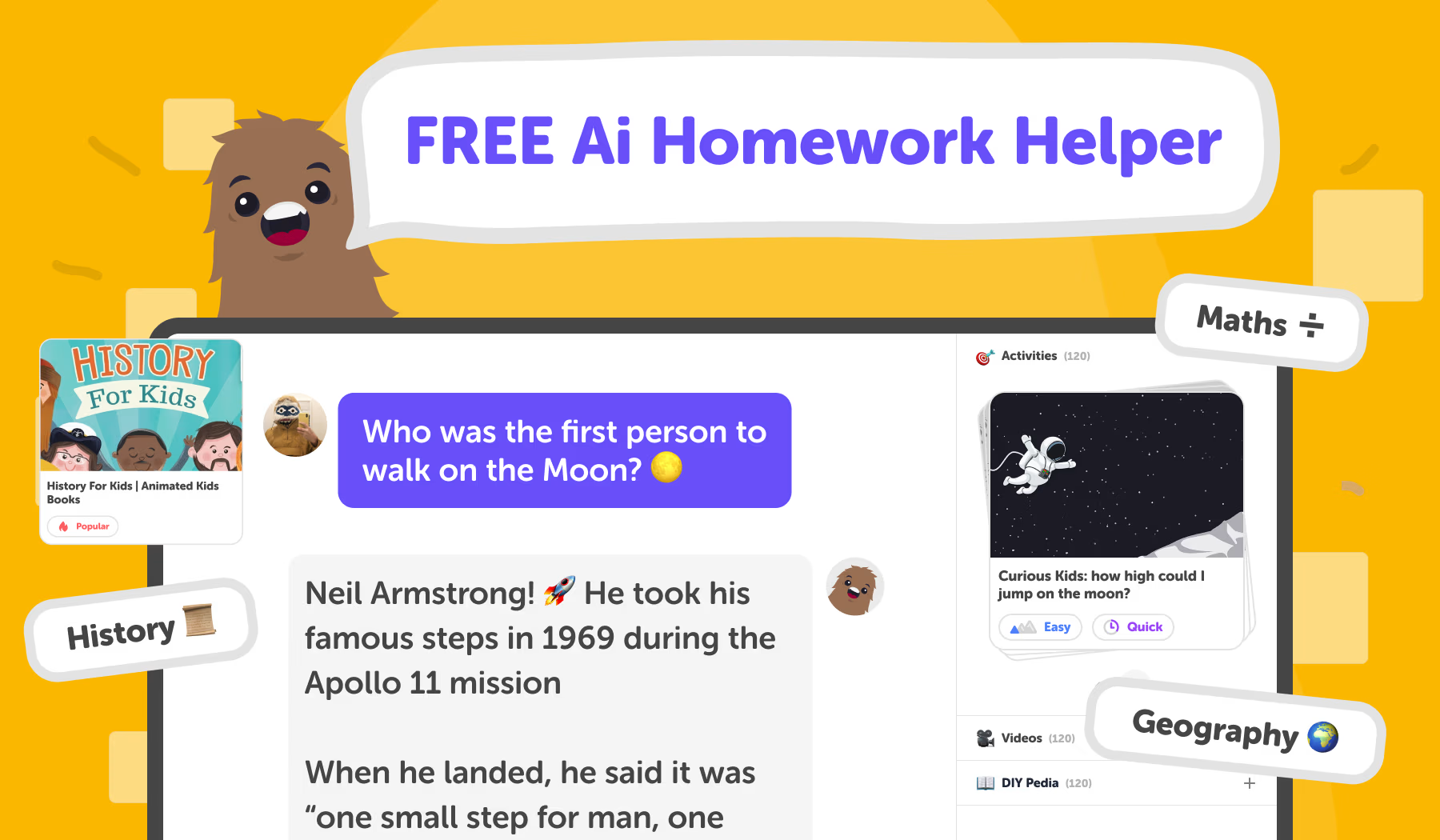It can be if you submit AI-written work as your own. The safer path many schools encourage is responsible AI use for learning (explanations, outlines, self-quizzing) paired with at least one AI-free assessment (e.g., in-class writing, presentations) to prove individual understanding. Policies differ by teacher and school, so always check the course rules.
For younger learners, choose a guided homework helper with guardrails so AI supports learning not shortcuts.
What counts as cheating vs. allowed AI help?
Cheating (not OK):
Turning in AI-generated text as your own answer.
Heavily paraphrasing AI output and submitting it without disclosure.
Using AI during AI-free tests or take-home assessments where it’s not permitted.
Often allowed (confirm with your teacher):
Asking AI to explain a concept in plain language.
Getting outlines, study plans, or practice questions.
Using ChatGPT Study Mode for step-by-step review and self-quizzing its design focuses on learning, not just answers.
Can teachers actually detect AI?
Not reliably enough to depend on. Universities and education bodies caution that AI detectors vary widely and can false-flag genuine student work, so institutions are shifting toward assessment design (more secure, AI-free tasks) rather than detector-only crackdowns. Recent cases and reviews highlight detector inconsistency and fairness concerns.
What this means for families:
Don’t rely on a detector to “prove” innocence or guilt.
Expect more in-class writing, oral checks, and practical demos to confirm understanding.
How AI Homework Helper Encourages Smarter Use

Generic AI like ChatGPT wasn’t built just for kids. That means it can sometimes give answers that are:
Too complex for younger learners
Incomplete or even incorrect
Easy to misuse for copying instead of learning
The DIY.org homework helper tool avoids those pitfalls by always:
Explaining step by step
Using kid-friendly language
Guiding curiosity instead of handing out shortcuts
What schools and districts are saying right now
Policies are in flux, but the trend is toward responsible use + secure assessments (rather than blanket bans or detector-only policies).
U.S. Department of Education resources emphasize responsible, transparent AI use and risk management while encouraging innovation local policies will implement these ideas differently.
Helping Kids Build Smarter Study Habits

Parents play a big role in shaping how kids use AI. Here are three key strategies:
Setting Boundaries
Encourage kids to try first, then check with AI. This ensures effort comes before technology.
Asking for Explanations
Instead of “Give me the answer,” teach kids to ask, “Can you explain how to solve this?”
Staying Curious
Remind children that AI is like a flashlight. It lights up the path, but they still need to walk it.
👉 A great place to start is the DIY.org homework helper tool.
Real-Life Example: Fractions Made Easy
Imagine a child stuck on adding fractions: 2/3 + 1/4. They’re frustrated, erasing over and over.
One version of this story: the child pastes the problem into AI and copies the answer “11/12.” They’ve solved nothing.
The better version: the child asks AI to explain step by step. The AI says:
Find a common denominator (12).
Convert each fraction (2/3 = 8/12, 1/4 = 3/12).
Add them together (8/12 + 3/12 = 11/12).
Now the child not only has the answer, but understands why.
Parents’ Biggest Questions
Is using AI for homework cheating?
If you submit AI-written work as your own, yes—that’s cheating. Using AI for learning (explanations, practice, outlines) is often allowed when you follow class rules and still demonstrate your own understanding on AI-free tasks. APA Style
Can teachers detect if I used ChatGPT?
AI detectors are not consistently reliable and have produced false accusations; schools are moving toward better assessment design instead of detector-only enforcement. Adelaide Now
Is ChatGPT Study Mode allowed?
Often yes, for studying. It’s designed for step-by-step learning and self-quizzing confirm with your teacher and your school’s policy. OpenAI
How do I cite ChatGPT in MLA/APA? Follow current MLA and APA instructions. MLA uses a prompt description and access date; APA provides reference formats for AI tools or specific chats. Always check the latest guidance. MLA Style Center
The Future of AI in Homework
We’ve seen this story before: calculators, spellcheck, and Google all felt threatening at first. Over time, they became essential tools for learning. AI is likely the same.
The challenge for parents and teachers isn’t to stop kids from using AI, it's to guide them toward using it responsibly, curiously, and creatively.
That’s exactly what the AI Homework Helper is built for: to make sure kids learn smarter, not lazier.

So, is AI for homework cheating? The answer is simple: it depends. If kids are using it to avoid thinking, yes. If they’re using it to learn more effectively, no.
AI is a tool, like a calculator or dictionary. In the right hands, it empowers kids to understand more, explore deeper, and build confidence. In the wrong hands, it just hands out shortcuts.
Parents can make the difference by encouraging the right use, asking the right questions, and leaning on safe, kid-focused platforms like the DIY.org homework helper tool.




